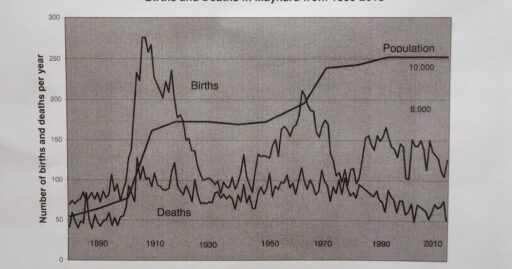Table of Contents
The article ‘Harnessing Continuous Data Streams for Real-time Analytics’ delves into the transformative impact of real-time data processing, exploring the fundamentals, key technologies, practical applications, and architectural considerations. It highlights how continuous data streams can be utilized to provide instantaneous insights that drive business agility and informed decision-making. By examining the challenges and solutions in orchestrating streaming data, the role of technologies like stream processing engines and real-time databases, and the practical applications across various industries, the article provides a comprehensive guide for leveraging real-time analytics to its fullest potential.
Key Takeaways
- Real-time data processing is essential for tasks like financial trading and IoT monitoring, requiring the adaptation of ELT processes and streaming caches to integrate streaming and static data sources effectively.
- Key technologies such as Kafka, Google PubSub, AWS Kinesis, and real-time databases are crucial for enabling real-time analytics, supporting use cases like fraud detection, inventory management, and personalized recommendations.
- Stream processing engines are central to real-time analytics, performing tasks like data cleaning, preprocessing, and transformation to facilitate continuous data analysis from multiple concurrent sources.
- Architecting for scale involves creating streaming data pipelines with distributed storage and cloud-based data warehouses, integrating systems like Apache Kafka, Spark, and Flink for robust real-time processing.
- Stream processing enhances business agility, simplifying data architectures and enabling immediate responses to time-sensitive events, thereby informing operational and strategic decisions in real-time.
The Fundamentals of Real-Time Data Processing


Understanding Continuous Data Streams
Continuous data streams are the lifeblood of real-time analytics, providing a non-stop flow of information that reflects the current state of systems, transactions, or sensors. Stream processing is the enabler here, transforming raw data into actionable insights as events occur. Unlike batch processing, which handles data at intervals, stream processing deals with data in motion, enabling immediate analysis and decision-making.
In the realm of stream processing, data pipelines play a crucial role. They ingest, join, aggregate, and transform data, creating enriched streams that downstream systems can utilize. This continuous data transformation is essential for operational data warehouses to support real-time use cases. However, the challenge lies in the lack of SQL support in most streaming services, contrasting with traditional data warehouses that are optimized for querying historical data but not for real-time streams.
By adapting ELT (Extract, Load, Transform) processes for streaming data and leveraging technologies like streaming caches, organizations can overcome these challenges. They can integrate real-time insights with static data sources, although orchestrating complex streaming pipelines remains a significant hurdle.
Adapting ELT for Streaming Data
In the realm of real-time data processing, adapting Extract, Load, Transform (ELT) methodologies for streaming data is crucial for organizations seeking to capitalize on immediate insights. Traditional batch-oriented ELT processes are reimagined to accommodate the continuous nature of data streams, ensuring that data is not only ingested and loaded but also transformed in a manner that supports instantaneous decision-making.
By leveraging streaming caches and integrating with static data sources, businesses can overcome the challenges of orchestrating complex streaming pipelines. This integration is pivotal for maintaining a seamless flow of data and enabling real-time analysis.
The transformation of streaming data often requires a different set of tools and approaches compared to batch data. Here’s a brief overview of the key differences:
- Batch ELT: Optimized for large volumes of static data, processed in intervals.
- Streaming ELT: Designed for continuous data flows, requiring immediate processing.
Adapting ELT for streaming data not only involves technical adjustments but also a strategic shift in data management practices. As the landscape evolves with technologies like Apache Flink and open source table formats such as Apache Iceberg, organizations must stay agile to harness the full potential of real-time analytics.
Challenges in Streaming Data Orchestration
Orchestrating streaming data involves a complex interplay of components that must work in harmony to ensure data integrity and timely processing. The dynamic nature of streaming data requires robust systems that can adapt to varying loads and data velocities.
- Scalability: Scaling streaming services efficiently, especially with the advent of BYOC models.
- Integration: Connecting legacy systems to modern platforms without disrupting existing operations.
- Complexity: Managing the intricacies of continuous data ingestion, transformation, and delivery.
- Governance: Implementing streaming governance to maintain data quality and compliance.
The convergence of machine learning and real-time environments is transforming streaming data pipelines, necessitating advanced orchestration strategies to leverage the full potential of real-time analytics.
Key Technologies Powering Real-Time Analytics


Stream Processing Engines and Their Role
Stream processing engines are at the heart of the real-time analytics ecosystem, enabling the continuous analysis of data as it arrives from various sources. These engines are responsible for transforming the incoming data by cleaning, preprocessing, and adjusting formats to ensure it is primed for analysis.
The power of stream processing lies in its ability to provide real-time insights and analytics, reacting to events as they occur. This is crucial for applications that require immediate data-driven responses, such as fraud detection or dynamic pricing strategies.
Stream processing use cases can be broadly categorized into:
- Event-driven applications
- Real-time analytics
- Streaming data pipelines
Each category leverages the unique capabilities of stream processing to enhance data value and utility. For instance, streaming data pipelines ingest and enrich data streams, creating new streams that downstream systems can utilize for various purposes.
Stream processing technologies like Apache Paimon exemplify the integration of stream processing with ETL operations, offering a glimpse into the future of data management and analytics.
Real-Time Databases and Continuous Data Support
Real-time databases (RTDBs) are engineered to handle the velocity and volume of continuous data streams, providing the backbone for applications demanding immediate data access and processing. They excel in environments where rapid decision-making and operational efficiency are paramount.
- High Concurrency: RTDBs support multiple users accessing and modifying data simultaneously, crucial for collaborative real-time environments.
- In-Memory Processing: Leveraging in-memory techniques for swift data retrieval and manipulation.
- Event-Driven Architecture: Ensuring immediate response to data changes and user interactions.
- Data Replication: Enhancing data availability and reliability across distributed systems.
By integrating real-time databases into their infrastructure, organizations unlock the potential to process and analyze data as it streams in, transforming raw data into actionable insights with unprecedented speed.
In the realm of custom software development and consultancy, RTDBs empower developers to create applications that are not just reactive, but proactive in user engagement, setting new standards for interactivity and user experience. The table below succinctly captures the diverse applications of real-time databases across various industries:
| Industry | Application |
|---|---|
| Fintech | Fraud detection, instant transactions |
| Healthtech | Patient monitoring, real-time diagnostics |
| IT & Project Management | Task tracking, real-time collaboration |
| Software Development | Performance monitoring, live feature updates |
Leveraging Analytics Platforms for Timely Insights
The integration of real-time data into analytics platforms transforms the landscape of business intelligence. Organizations can now make immediate decisions based on the most current and relevant data, a capability that is invaluable in dynamic environments. By processing and analyzing data as it is generated, businesses gain a competitive edge through agility and informed decision-making.
Enhanced data relevance and accuracy is a cornerstone of real-time analytics. This ensures that organizations work with the freshest and most accurate information, reducing the risk of decisions based on outdated or erroneous data.
Analytics platforms like Kafka, Google PubSub, AWS Kinesis, Azure EventHub, Snowflake, and BigQuery enable companies to act on timely insights. These insights are crucial for use cases such as fraud detection, inventory monitoring, and personalized recommendations, which rely on split-second data analysis and response.
The need for time-based insights is indispensable across various industries. In healthcare, real-time data analytics is a lifeline for medical professionals, while in finance, it enables professionals to capitalize on fleeting market conditions.
Practical Applications of Real-Time Data Analytics


Fraud Detection and Prevention
In the realm of real-time analytics, fraud detection stands as a critical application, leveraging the immediacy of data streams to identify and prevent fraudulent activities as they occur. The ability to analyze transactions on-the-fly and trigger instant alerts upon detecting suspicious patterns is paramount in mitigating financial risks.
The effectiveness of fraud detection systems hinges on their capacity to process and analyze data with minimal latency, ensuring that potential threats are identified and addressed with swiftness.
To ensure robust fraud prevention, several key components must be integrated:
- Real-time monitoring of transactions to detect anomalies.
- Dynamic rule engines that adapt to emerging fraud patterns.
- Machine learning models that learn from historical data to predict and identify fraudulent behavior.
- Alert systems that notify stakeholders and trigger responses instantly.
These elements form a cohesive shield, safeguarding against the ever-evolving tactics of fraudsters and maintaining the integrity of financial systems.
Inventory Monitoring and Management
Real-time inventory tracking enables businesses to optimize their stock levels, ensuring that they are neither overstocked nor understocked. This dynamic approach to inventory management can lead to significant cost savings and increased operational efficiency.
Monitoring and alerting mechanisms are crucial for maintaining the integrity of inventory data. They provide the means to track key metrics and implement proactive issue resolution.
By leveraging real-time analytics, facility managers can not only improve space allocation and maintenance programs but also ensure smooth operations across the board. Enhanced logistics, driven by live data, allow for more informed decisions regarding shipping trends, inventory updates, and warehousing processes.
Accelerating insights for agile optimization is essential in today’s fast-paced market. Manufacturers adopting real-time analytics can swiftly identify and address inefficiencies, thereby reducing costs and eliminating waste without the delays associated with periodic data analysis.
Enhancing Customer Experiences with Personalized Recommendations
Real-time analytics plays a pivotal role in enhancing customer experiences by providing personalized recommendations. By analyzing customer behavior and preferences on-the-fly, businesses can deliver highly targeted content and product suggestions, fostering a sense of individual attention and increasing customer engagement.
The immediacy of real-time data processing allows for the dynamic adjustment of recommendations, ensuring that users receive the most relevant content based on their latest interactions.
For streaming media services, this means analyzing billions of data points to tailor movie and show suggestions. The impact of such analytics is profound, as it not only boosts customer satisfaction but also drives content consumption and loyalty. Here’s how real-time analytics benefits both businesses and customers:
- Businesses can detect trends quickly, respond to market changes, and offer timely promotions.
- Customers enjoy a curated experience that feels personal and responsive to their actions.
By leveraging the power of real-time analytics, companies can transform the way they interact with their customer base, turning every interaction into an opportunity for connection and growth.
Architecting Streaming Data Pipelines for Scale


Ingesting and Enriching Data Streams
The inception of any real-time analytics system lies in the efficient ingestion of data streams. This process involves the collection, transformation, and storage of raw data from various sources, setting the stage for subsequent analysis and application.
Once data is ingested, it undergoes a crucial transformation phase. Here, streaming analytics tools apply real-time analytics algorithms to extract insights and identify patterns as data flows through the system. This stage is pivotal as it refines the data, ensuring that only relevant and high-quality information is forwarded to downstream processes.
The enrichment of data streams is a transformative step that adds value by performing joins, aggregations, and other operations to generate enriched data streams.
To ensure a robust data ingestion architecture, consider the following strategies:
- Establishing a seamless integration of diverse data sources.
- Implementing real-time analytics algorithms for immediate insight extraction.
- Utilizing stream processing technologies like Apache Flink to manage continuous data flows.
- Adapting the architecture to accommodate the scalability and flexibility required for growing data volumes.
Distributed Storage and Cloud-Based Data Warehouses
The evolution of data infrastructure has led to the integration of new data governance capabilities within cloud data warehouses and databases, streamlining the creation and sharing of reusable data products. This shift is pivotal for the widespread adoption of real-time data analytics in business operations.
A key development in this area is the separation of compute and storage, allowing for independent scaling and more efficient resource utilization. This architectural change is particularly beneficial for handling variable workloads, which are common in real-time data processing scenarios.
The modern cloud data warehouse has become a cornerstone for real-time big data analytics, providing a robust structure for managing large volumes of data and supporting instantaneous processing.
Here is a brief overview of the components typically involved in such architectures:
- Distributed storage systems (e.g., Hadoop)
- Cloud-based data warehouses
- Real-time data processing systems (e.g., Apache Kafka, Spark, Flink)
- In-memory databases for rapid data retrieval
These components work in concert to minimize latency and maximize efficiency, ensuring that businesses can respond swiftly to emerging data insights.
Integrating with Apache Kafka, Spark, and Flink
The integration of Apache Kafka, Spark, and Flink is pivotal for constructing robust streaming data pipelines. Kafka, transcending its initial role as a transport layer, now integrates with cloud storage solutions, enhancing long-term data analysis capabilities. Flink, recognized for its low-latency and high-throughput processing, is increasingly adopted by companies like Uber and Netflix for demanding real-time data tasks.
Apache Spark, once the cornerstone for batch data processing, now finds its counterpart in Flink for stream processing. This synergy is essential as businesses pivot towards AI-driven continuous data processing. The adoption of open-source table formats such as Apache Iceberg, Hudi, and Paimon is simplifying ETL processes, positioning Kafka as a critical ingestion layer.
The convergence of these technologies is not just about AI; it’s about enabling scalable, managed streaming services and real-time machine learning applications. The BYOC deployment model and data mesh architectures are shaping the future of streaming data governance and infrastructure.
The table below outlines the key attributes of each technology, highlighting their roles and interoperability in the streaming data ecosystem:
| Technology | Role in Streaming Data | Key Features |
|---|---|---|
| Kafka | Data Transport & Ingestion | Integrates with cloud storage, supports incremental processing |
| Spark | Batch Data Processing | Powers ML, BI, and reporting for decision-making |
| Flink | Stream Processing Engine | Low latency, high throughput, fault tolerance |
Harnessing Stream Processing for Business Agility


Real-Time Analytics and Operational Decision-Making
Real-time analytics, also known as streaming analytics, is a transformative force in operational decision-making. By analyzing data streams as they occur, businesses can make informed decisions promptly, ensuring that actions are based on the latest information. This immediacy not only enhances data relevance but also significantly improves the accuracy of business insights.
The agility afforded by real-time analytics is a game-changer for businesses that operate in dynamic markets. It allows for the detection of trends and emerging patterns, enabling companies to act swiftly and with confidence.
In the context of operational efficiency, real-time analytics facilitates immediate decision-making, which is crucial in environments where time is of the essence. For instance, in the realm of inventory management, real-time data can signal the need for stock replenishment before a shortage occurs, thus avoiding potential sales losses.
- Immediate Insights: Unlocking the potential for swift action
- Agile Decision-Making: Adapting quickly to market changes
- Enhanced Accuracy: Ensuring decisions are data-driven
- Trend Detection: Capitalizing on opportunities in real-time
Simplifying Data Architectures with Event Streaming
Event streaming technologies have revolutionized the way businesses handle data by simplifying complex data architectures. By enabling real-time data processing and analytics, organizations can respond more quickly to market changes and customer needs.
Stream processing, also known as event streaming or complex event processing (CEP), is at the heart of this transformation. It allows for the continuous collection, storage, and management of data streams, providing the agility needed to react to events as they occur.
The benefits of event streaming can be categorized into three main use cases:
- Event-driven applications: Triggering immediate actions based on data analysis, such as fraud detection alerts.
- Real-time analytics: Providing up-to-the-second insights for timely decision-making.
- Streaming data pipelines: Enriching data streams through joins, aggregations, and transformations to create higher-value streams for downstream consumption.
With the rise of data mesh architectures and the positioning of Kafka as a key ingestion layer, the landscape of real-time operations is rapidly evolving to meet new business requirements and governance standards.
Responding to Time-Sensitive Events in the Moment
In the realm of event-driven applications, time is of the essence. The ability to respond to time-sensitive events as they occur is not just advantageous; it’s imperative for maintaining a competitive edge. Real-time analytics architectures serve as the backbone for such responsiveness, enabling organizations to act swiftly in the face of rapidly changing conditions.
The integration of real-time data analytics into operational workflows transforms decision-making from a reactive to a proactive stance. This shift is crucial in industries where timing can mean the difference between success and failure.
For instance, in the healthcare sector, real-time analytics can be the difference between life and death, as it allows for immediate intervention based on the latest patient data. Similarly, in the financial world, the ability to react to market changes instantly can result in significant economic gains or the prevention of losses. Below is a list of key benefits that organizations can reap by effectively responding to events in real-time:
- Detection and response to threats: Immediate identification and mitigation of potential risks.
- System updates and user notifications: Prompt adjustments and communications to stay current.
- Adaptation of offerings: Quick alteration of services or products to meet evolving demands.
- Agile decision-making: Enhanced capability to make informed decisions without delay.
Conclusion
In the era of instantaneous data generation, real-time analytics has emerged as a critical component for businesses to stay competitive and agile. Throughout this article, we have explored the intricacies of harnessing continuous data streams, from the processing approaches and data sources to the applications and underlying technologies that make it all possible. By effectively implementing streaming data pipelines and leveraging powerful analytics platforms, organizations can unlock the potential of real-time insights to drive operational efficiency, enhance customer experiences, and make informed decisions swiftly. As the volume and velocity of data continue to grow, the ability to analyze and act upon information in real time will not only be a strategic advantage but a necessity for success in the digital landscape.
Frequently Asked Questions
What is real-time data processing and why is it important?
Real-time data processing involves analyzing data as soon as it is generated, allowing for immediate insights and actions. It’s crucial for tasks like financial trades, IoT monitoring, and operational decision-making, as it enables businesses to respond quickly to changing conditions.
How do stream processing engines contribute to real-time analytics?
Stream processing engines analyze data from multiple sources concurrently, handling tasks such as data cleaning, preprocessing, and format adjustments. They ensure that data is processed continuously and seamlessly, providing the foundation for real-time analytics.
What are some practical applications of real-time data analytics?
Real-time data analytics is used for fraud detection, predictive maintenance, inventory monitoring, and providing personalized recommendations. These applications depend on immediate data analysis and responses for their effectiveness.
What role do real-time databases play in handling continuous data streams?
Real-time databases are designed to capture and process large volumes of data from diverse sources in real-time. They are essential for applications requiring immediate analytics, such as monitoring systems and fraud detection.
How are streaming data pipelines architected for scalability?
Streaming data pipelines are built to ingest continuous data streams, perform data enrichment through joins and aggregations, and support distributed storage and cloud-based data warehouses. They often integrate with technologies like Apache Kafka, Spark, and Flink for scalability.
What is the difference between continuous analytics and on-demand analytics?
Continuous analytics refers to the real-time analysis of data as it is generated, using streaming analytics technologies. On-demand analytics, in contrast, involves processing data upon request, rather than continuously.





